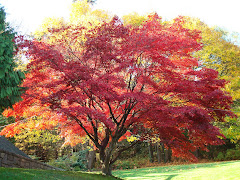 Natural multi colored turquoise earrings with .925 Sterling Silver ear hoops.
Natural multi colored turquoise earrings with .925 Sterling Silver ear hoops.

DID YOU KNOW?
What do you think of when you hear the word turquoise? I think of the American Southwest, where turquoise has been a part of Native American tradition for thousands of years. Turquoise has been mined in many places throughout the world. Clear blue Persian turquoise it thought by many to be among the finest turquoise. Mines in India produce green turquoise. Chinese mines are currently selling a great deal of turquoise in varying colors to the jewelry industry. Mines in the southwestern US, many family owned, yield turquoise in a variety of colors and qualities.
Turquoise Formation
Turquoise forms when water percolates through rocks that contain copper, aluminum and other minerals. A chemical reaction takes place that results in deposits of what we know as turquoise. That's a simplified way of describing a process that takes millions of years and only happens when a complex set of conditions come together. The blue in turquoise is enhanced when copper is present. If the area where turquoise is formed contains more aluminum, the turquoise will shade to green. When zinc is present, the deposits are a yellow-green color, a rare combination that so far has been found in only a few areas, including the Carico Lake and Blue Ridge mines in Nevada.
Why Are There Dark Markings in Turquoise?
That's the matrix, the rock that the turquoise formed in. When stones are cut, some of the matrix remains bound to the turquoise. Matrix color varies because turquoise can form in different types of rock.
- Black matrix may be iron pyrite
- Yellow matrix could be rhyolite
- Brown is probably iron oxide
Is Turquoise a Hard Stone?
Hardness of turquoise used for jewelry usually varies from 5-6 on the Mohs scale. The hardest turquoise is usually found nearest the surface of the earth, where it's had a chance to dry, or cure. Softer turquoise is chalk-like -- too soft and porous to be used unless it's treated.
Stabilized Turquoise
An epoxy resin or other substance is infused into the pores of the turquoise. No longer porous, its color remains the same over time. Natural turquoise develops a lovely patina as its worn and absorbs oils from our skin.
How To Care for Your Turquoise
Handle your turquoise jewelry carefully to avoid scratching it. Don't store turquoise with harder gemstones or other materials that might rub against it and cause damage. Keep turquoise away from high heat and chemicals such as oils, perfumes, and household cleaners. Even stabilized turquoise can be affected by a constant bombardment of chemicals. Clean your turquoise in warm, sudsy water and dry it immediately with a soft cloth. Avoid commercial jewelry cleansers.




No comments:
Post a Comment